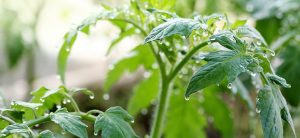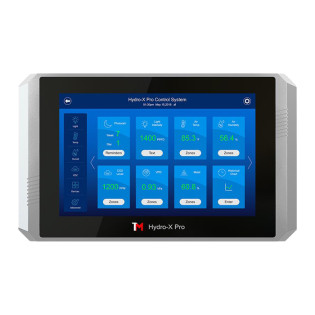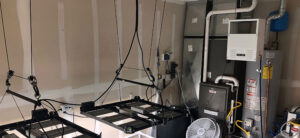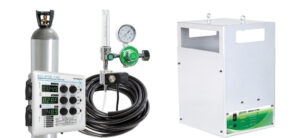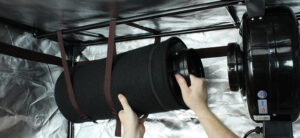
If you are unfamiliar with vapor pressure deficit (VPD) and its role in plant growth, you are missing out. It is one of the best ways to increase harvest weight. Leaf VPD is a critical metric in both the growth stage as well as flower stages.
It doesn't even matter if you have the best nutrients and genetics in the world. Your plants won’t reach their potential without dialing in temperature and humidity. The amount of water vapor and moisture the air can hold is critical.
The best cultivars in the world are able to manipulate VPD to keep the stomata on their plants open. This results in the plants taking up as many nutrients as possible. As you can imagine, this results in explosive growth.
We’ll cover how you can do this yourself in your grow room, but first, let’s cover some basic info on vapor pressure deficit.
What is vapor pressure deficit?
While vapor pressure deficit sounds scientific and confusing, it really isn't. It’s just a metric serious growers use to describe the combined pressure of air temperature, leaf temperature, and relative humidity.
VPD measures the difference, in terms of pressure, between the water vapor in the air, and the air's saturation point. The saturation point is the maximum amount the air can carry at its current temperature. The point of complete saturation is also called the dew point.
VPD meaning describes how your plants feel in their current environment in terms of moisture content and how they react.
Another way to look at it is that VPD is the difference between the conditions within your leaf (VPSat - saturated vapor pressure) and the conditions in your air (VPair - air pressure vapor).
If you have a hot, dry grow room, your plants will transpire more rapidly. The plants seek to balance out the conditions within their leaves and the grow room.
On the other hand, if you have a relatively humid environment, your transpiration rates will be lower. This is because conditions in the grow room are much closer to conditions within your plant - moist
Why is VPD important for plants?
If VPD is too high, your plants will be transpiring really heavily. This means they'll be absorbing more water and nutrients, which can cause toxicity.
On the other hand, a very low VPD will also cause problems. Your plants will not transpire, which means they won't be able to uptake fresh nutrients, and they will develop deficiencies.
You can manipulate VPD as a grower to encourage your plants to keep their stomata open. This helps them to constantly expel moisture into the growing environment.
This results in maximum nutrient uptake through the roots. When your plants transpire, they then need to take up more moisture through their roots to accommodate for this lost moisture.
And when you feed nutrients to the root zone, these get taken up along with the moisture. This is how the feeding process usually takes place.
So in theory, you can manipulate VPD and encourage your plants to constantly take up nutrients. There is a fine line, though, as too many nutrients are not a good thing (toxicity)
But if you can dial in the optimal VPD range, it will result in a more efficient, healthier plant. And thus, a more robust, heavier-yielding plant.
Growers who can successfully dial in their VPD can maximize the genetic potential of their plants. But how do you actually do this?
Does VPD Affect Your Plants CO2 Uptake?
Many growers wonder how high VPD levels can affect plants CO2 uptake. With the general aspect of pushing the plant to the highest potential, they'll be able to uptake CO2 more readily.
This means if you are focusing on dialing your VPD in, you can definitely benefit from supplementing with CO2.
How do you calculate VPD in the grow room?
By far the easiest way to calculate VPD in the grow room is by following a VPD chart or VPD calculator. We have one listed below. You simply want to be as in the green as possible, and follow the curve across different stages of growth.
But, it doesn't hurt to understand the science behind these charts. We'll walk you through an example of how to actually calculate vapor pressure deficit using a grow room with:
- Air Temp: 77 degrees Fahrenheit (25 Celsius)
- Leaf Temp: 73.5 degrees Fahrenheit (23 Celsius)
- Relative Humidity: 50%
What you’ll need:
- Typical hygrometer (required)
- Infrared thermometer to measure leaf temperature (Ideal, but not required. You can use your hygrometer and place the probe by your canopy, but this won’t be as accurate).
Once you know your air temperature, leaf/canopy temperature, and relative humidity, you can calculate the vapor pressure deficit.
To begin, you'll need your temperatures in Celsius. The conversion for Fahrenheit to Celcius is:
[(Fahrenheit-32)*5]/9 = Celsius
Example: [(77F-32)*5]/9=25
So, 77 degrees Fahrenheit would be 25 degrees Celsius.
Start by calculating VPsat, which is the pressure within your leaf. You'll use the leaf temperature for this:

This first calculation gives you a VPsat of 2.8088 kPa.
From there, you need to calculate VPair - the pressure of the grow room air. The equation is the exact same. The only difference is you use the air temp - not leaf temp, and you'll multiply by your relative humidity:

This comes out to a VPair of 1.5835. The final step is subtracting this figure from the VPsat you just calculated, which is a final figure of 1.23 kPa. But what does this actually mean, and how does this metric help inform decisions?
Ideal VPD readings across different growth phases
As you likely already know, plants enjoy different atmospheric conditions across their various stages of growth. Humidity and temperature should slowly decrease over the growing cycle.
Young seedlings and early veg plants enjoy higher temp/humidity, and flowering plants enjoy lower temperatures and lower humidity. Here are some recommendations:
- Propagation/Early Veg - 0.4-0.8 Kilopascals (kPa)
- Late veg/Early flower - 0.8-1.2 Kilopascals (kPa)
- Mid flower/Later flower - 1.2-1.6 Kilopascals (kPa)
Any VPD readings under 0.4 kPa (too low) or over 1.6 kPa (too high) are considered problematic. As we mentioned earlier, these imbalances in atmospheric conditions will lead to stunted growth and nutrient issues.
The goal is to keep your VPD reading as close to 1 as possible. If you can manage to do this, your environment will be close to perfect!
How to calculate vapor pressure deficit using a VPD chart

Not everyone has the time to constantly calculate conditions in their room, and thankfully, you don’t have to.
Instead, you can simply follow a VPD chart. This shows all the possible VPD readings across different temperatures and relative humidity levels.
When you have the chart in front of you, you can easily calculate the level of growth for your plants. Then, adjust temperature and humidity as needed to maintain the ideal level throughout each phase of growth.
Manipulating VPD in the grow room
If you calculate your VPD and determine there is an issue, you need to take action. This can be VPD being too low or VPD being too high.
It will come down to adjusting either temperature, relative humidity, or both. You can do this with a number of different types of equipment. It will depend on exactly how you need to adjust the environment:
But, most often, you can manipulate your VPD with a simple ventilation system. By setting up intake and exhaust cycles, you can fine-tune how often you are expelling air. You also fine-tune how often you are bringing fresh air in.
You can learn all about setting up a ventilation system in our blog.
Final Thoughts On Grow Room VPD
Now that you understand the importance of VPD, you know how to manipulate it. This is a major step on your way to perfecting your grow room environment.
It just comes down to finding a VPD chart, and matching up your temperature and humidity to stay within the green zone. It can get complicated, but it doesn't have to be!
To grab any of the supplies and equipment you'll need, head over to the environment section of our website. There you will be able to find fans, dehumidifiers, or A/C units!





